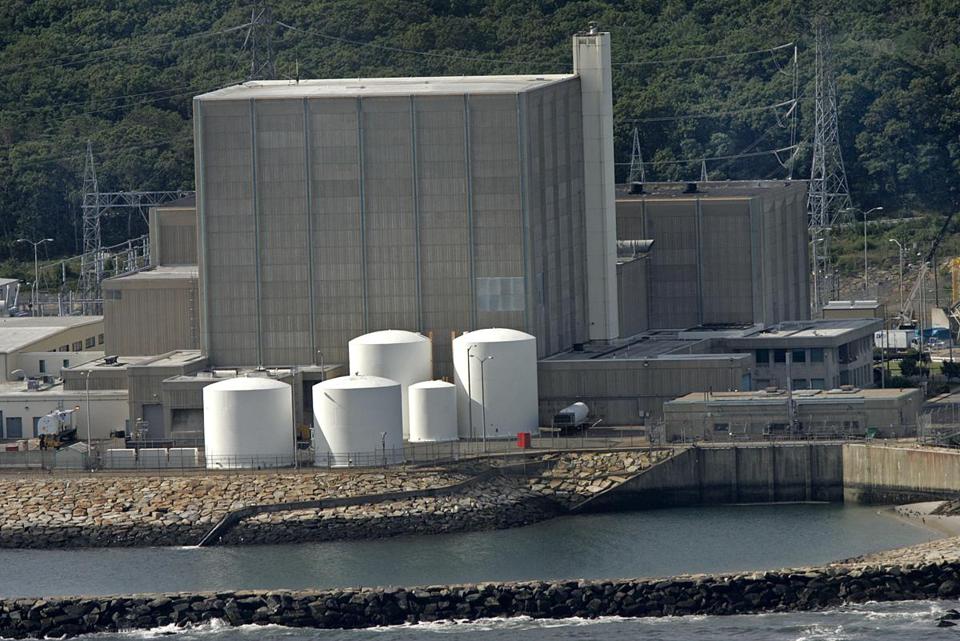Last week, I presented the key findings from our new report Water-Smart Power: Strengthening the U.S. Electricity System in a Warming World to state utility regulators and their staff at the National Association of Regulatory Utility Commissioners (NARUC) Summer Meetings in Denver. The presentation was followed by a rich discussion in which state regulators agreed that the profile of the energy-water nexus should be elevated to a higher level in NARUC. This UCS-sponsored event was well attended, with a full room of over 40 participants.
An overreliance on natural gas is bad from a climate and water perspective
Our new report shows that a “business as usual” scenario, in which natural gas power plants are the most common replacement for retiring coal and nuclear power plants to meet future U.S. electricity demand, is a problem from both a climate and water perspective.
U.S. power plant carbon emissions would stay relatively flat, while water use would not be significantly reduced until after 2030 under this pathway. Given current water constraints, a 20-year delay would leave the power industry vulnerable to drought, extreme heat, and competition from other water users.

U.S. Electricity Mix under Four Scenarios, 2010-2050.
Low carbon doesn’t necessarily mean low water
We found that a high nuclear and coal with carbon capture and storage (CCS) scenario could significantly reduce U.S. carbon emissions, but could also result in higher water use and much higher costs than business as usual. In contrast, we found that a high renewables and energy efficiency scenario would result in deep cuts in both carbon emissions and water use, while saving consumers money on their electricity bills.

U.S. Power Plant Water Use under Four Scenarios, 2010-2050.
Report recommendations
I also highlighted recommendations from the report that were relevant for state utility regulators, including:
- State PUCs should require utilities to consider water- and climate-related risks of different electricity generation options in long-term planning and power plant investment decisions.
- State legislatures should pass laws to encourage low-carbon, water-smart options and to empower PUCs to take carbon and water into account in utility plans and decisions.
- Utilities and power plant owners should bring water into decision making in ways that reflect long-term market value and risk, which can help identify and prioritize low-carbon options that are also water-appropriate for the local environment.
(For more details on the report, see these recent blogs by my colleagues John Rogers and Erika Spanger-Siegfried).
We had a very rich discussion following my presentation. Conversations with NARUC’s Committee leaders supported a larger discussion on the issue at upcoming NARUC meetings in November and February. Several commissioners expressed interest in having a plenary session on energy-water issues to elevate this issue to a higher level. New Jersey Commissioner Jeanne Fox and Nevada Commissioner Alaina Burtenshaw (Co-Vice Chair of NARUC’s Water Committee) also endorsed an effort to draft a NARUC resolution on the energy-water nexus. UCS made offers to participate in planning these extensions of this dialogue.
We also discussed areas of potential follow-up research, such as:
- Quantifying the water savings from energy efficiency measures that reduce electricity use in homes and businesses.
- Analyzing the demand for electricity to treat and distribute water.
- Estimating future water use and water quality impacts from hydraulic fracturing (fracking) for natural gas, which we did not include in our analysis

Pilgrim Nuclear Power Plant in Massachusetts
Addressing the water impact of our electricity choices is urgent business
The recent heat wave — with highs above 90 degrees in many parts of the country for several days in a row — was an unpleasant reminder of the impacts that extreme heat can have on electricity and water supplies. Electricity demand records were broken in New York and almost reached in New England, as well as in other parts of the country.
The high temperatures and increased stress on the electricity system pushed some thermoelectric power plants to their limits. For example, the Pilgrim Nuclear Power Plant in Massachusetts had to temporarily scale back production, when incoming ocean water temperatures from Cape Cod Bay reached its permit levels of 75o F.
In the report, we give many other examples of energy-water collisions that have happened over the past six years during periods of extreme heat and drought, and describe how we can expect events like these to become more frequent and severe in the future due to climate change.
Because most power sector decisions are long-lived, what we do in the near term commits us to risks or resiliencies for decades. For our climate—and for a secure supply of water and power—we must get this right.
